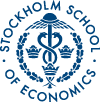No 662: Stylized Facts of Return Series, Robust Estimates, and Three Popular Models of Volatility
Timo Teräsvirta () and Zhenfang Zhao ()
Additional contact information
Timo Teräsvirta: Dept. of Economic Statistics, Stockholm School of Economics, Postal: Stockholm School of Economics, P.O. Box 6501, SE-113 83 Stockholm, Sweden
Zhenfang Zhao: Dept. of Economic Statistics, Stockholm School of Economics, Postal: Stockholm School of Economics, P.O. Box 6501, SE-113 83 Stockholm, Sweden
Abstract: Financial return series of sufficiently high frequency display stylized facts such as volatility clustering, high kurtosis, low starting and slow-decaying autocorrelation function of squared returns and the so-called Taylor effect. In order to evaluate the capacity of volatility models to reproduce these facts, we apply both standard and robust measures of kurtosis and autocorrelation of squares to first-order GARCH, EGARCH and ARSV models. Robust measures provide a fresh view of stylized facts which is useful because many financial time series can be viewed as being contaminated with outliers.
Keywords: GARCH; EGARCH; ARSV; extreme observations; autocorrelation function; kurtosis; robust measure; confidence region.
51 pages, First version: June 1, 2007. Revised: August 1, 2007. Earlier revisions: June 5, 2007, August 1, 2007.
Questions (including download problems) about the papers in this series should be directed to Helena Lundin ()
Report other problems with accessing this service to Sune Karlsson ().
RePEc:hhs:hastef:0662This page generated on 2024-09-13 22:19:41.

